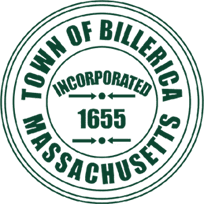The Billerica Substance Abuse Prevention Committee (BSAPC), comprised of eleven members appointed by the Board of Selectmen, the Police Chief, the Fire Chief, the Billerica Public Schools Superintendent, the Board of Health and the Shawsheen Valley Technical High School Superintendent, continually works to achieve the vision and the mission of the committee. The Committee meets twice a month, once as a full committee and once as a smaller working group.
Mission & Vision
To increase awareness, promote education, and provide resources to the community in order to reduce community-wide substance use disorder in Billerica. By fostering a community that embraces healthy choices and healthy lifestyles, we work to promote an addiction and stigma free society, so its families and its children may enjoy the peace and prosperity that evidence based solutions facilitate.
Goal
Create a region that prevents substance misuse and/or reduces substance use disorder and associated mental health illnesses for all demographics.
Description for this block. Use this space for describing your block. Any text will do. Description for this block. You can use this space for describing your block.
Recommended Strategies:
- Identify and implement evidence-based approaches and best practices;
- Develop Teen Leadership program for grade 6, 7 and 8; (Project Assert)
- Implement Health course curriculum for grades 9-12; (Project Here and EverFi)
- Provide the appropriate tools to the community to assess community readiness regarding substance use and mental health services;
- Provide a predetermined number of Youth and Adult Mental Health First Aid training’s offered by community partners;
- Support mandated Screening, Brief Intervention, and Referral to Treatment (SBIRT) implementation in schools within the region;
- Provide support in follow-up interventions to students;
- Identify and enroll high risk adolescents into early intervention and treatment programs.
Rationale: When evidence-based substance use prevention programs are properly implemented by schools and communities, use of alcohol, tobacco, and illegal drugs is reduced.
Recommended Strategies:
Resources
- Develop a mental health and substance abuse service resource/referral list for first responders and community members;
- Develop and Promote “drug free Billerica website” for consistent messages regarding available resources;
- Increase awareness for Drug-Take-Back Program’s proper process for disposal procedures and current kiosks;
- Develop and Implement strategies to provide increased access for safe disposal of used sharps;
- Develop and Implement a Young People in Recovery network and peer led support group.
Transportation (Patients transported to treatment facilities after being medically cleared)
- Research protocol from Emergency Medical Services in each town in the region regarding where they currently transport substance abuse and mental health patients;
- Identify and present best practices for transportation to treatment facilities.
Access
- Implement strategies to improve access for individuals to receive substance abuse and mental health services.
Rationale: There is an expressed concern at the lack of access to resources, counseling, and care for people with substance use disorder within the wider community. Besides an overall scarcity of resources, there is also a lack of established programming for specific community members, such as young people in early recovery and mothers and children with substance use disorder.
Recommended Strategies:
Encourage the community to follow current and support existing evidence-based jail diversion programs for mental health and substance abuse;
Identify and utilize the number of recovery coaches in the town;
Provide train-the-trainer programs specific to first responders and recovery coaches on how to respond and provide treatment options for overdose victims;
Establish location of jail diversion programs;
Promote alternative community service programs for individuals with substance-related offenses.
Rationale: Inmates in jail for drug-related charges, who are left untreated or not adequately treated, are at greater risk for using drugs when they are released from prison and tend to commit crimes at a higher rate than those who do not use drugs. Providing a person with substance use disorder with treatment rather than punishment would be more effective and would help them into recovery.
